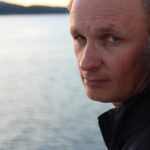
Ken Wilber is a fascinating, and controversial, contemporary American philosopher (or arguably a psychologist insofar as he builds heavily from psychological theories; for that version of Ken Wilber, link is here). He has developed “integral theory”, which is a way to integrate all existing theories into a single coherent framework. As Wilber puts it, no one is smart enough to be wrong about everything; with the consequence that every theory, no matter how bad, will have some truth. The challenge that Wilber addresses through integral theory is how to integrate an enormous variety of very different theories – some scientific, some philosophical, some spiritual, some artistic, and so on – into the same meaning space such that there can be some comparison and conversation between them, rather than incomprehension and a “dialogue of the deaf” as is usually the outcome.
Without a doubt, however, Wilber’s use of “integral” as a term to which contemporary theorizing should aspire and that names how theory should transcend its prior reductive, mechanistic, analytic-decompositive, stance (a transcending that, as Wilber himself emphasizes, is a moving beyond that is only possible insofar as it includes this prior stage).
A major contribution Wilber makes is summarized in his division of all theories into four quadrants, formed by making a distinction between inner and outer (that I feel amazed by the beauty of the sunset, is an inner feeling; how my eyes & brain are processing the visual perception of the sunset is an outer description) and between the individual and the collective. Making these two distinctions creates four quadrants; to which Wilber adds the notion that each of these quadrants is multi-levelled, and each also with a range of qualities. The four quadrants become a way to map a singular (i.e. integral) meaning space in which all theories can be placed, in terms of comparing each relative to what quality and what level they occur at. Wilber calls this an “AQAL” map – “all qualities, all levels”.

Certainly much of Wilber’s brilliance resides in how he works with integral theory and develops and applies it (see, for example, his books like Sex, Ecology, Spirituality or Integral Spirituality). In conceiving of all entities as always composed of multiple qualities and multiple levels he is able to put otherwise apparently incommensurate theories together. For example many spiritual traditions of the world talk about the inner experience of the contemplative or meditating practitioner, whereas much of modern psychology will focus on the behavioral and neuroscientific levels of the same. These appear as extremely different descriptions, with one option being to reduce one to the other, or another to simply not communicate between the two. Neither of those options is very satisfactory. Wilber affords a way to talk about both options and therefore to begin to potentially understand how these might relate to each other. In one domain, that of the relation of religious or spiritual claims about reality to scientific claims about reality, it is particularly appealing as the history of the relation between religion and science has been particularly vexed over the past two centuries in the West.
One area Wilber’s work is of particular interest for developing a contemplative ecology is in his treatment of transcendence. For one, contrary to much contemporary thought, Wilber uses the evidence from developmental theories to defend hierarchies as naturally occurring, necessary to think with, and not necessarily or automatically pernicious. Tied to this is his phrasing “transcend-and-include”, meaning that to transcend a particular state or stage or level, is not to leave it behind or to render it irrelevant or unimportant; rather, the very meaning of transcend as a “moving beyond” is only possible insofar as it has included that level or state and moved “through” and “upon” that level or state. Analogously, his articulation of the pre/trans fallacy is insightful: that refusing to acknowledge hierarchies or transcendence as real leads to a widespread fallacy in thinking that confuses a pre-level with a trans-level. For example, a pre-conventional thinker does not make conventional judgments about another person because they cannot; while a trans-conventional thinker does not either, but not because they can’t. Rather they have worked through the conventional view, understood it, and attained a higher level that while it includes conventional reasoning, is not bound to it and thus can choose not to make conventional judgments. Viewed from the outside the “not judging ” looks the same; from the inside, however, the pre-conventional thinker is ignorant or innocent of the meaning of conventions while the trans-conventional thinker does understand them but is not bound to them and acts freely of them. Wilber’s insights into transcendence are very helpful for developing a properly ecological view, as many of the issues about human alienation from the natural world devolve on how transcendence is (mis)understood.
Learn more:
Integral Life is a website devoted to disseminating Wilber’s theory and its numerous contemporary applications.
The Integral Institute is an example of the application of integral theory, specifically the AQAL model, to develop coaching and leadership.
Wilber always had an uneasy relationship with “the Academy” (for which you can praise him or criticize him, or both); and in turn “the Academy” has largely ignored or dismissed him. There are pros and cons to this. Certainly the most relevant criticism of Wilber and his approach is that he has not exposed his integral theory to the kind of deep critique and peer review that is typical of any good theory and in this regard he invites accusations of “guru-ism” and dogmatism. For a good critical engagement of some of his best concepts, see this page by Rolf Sattler.

